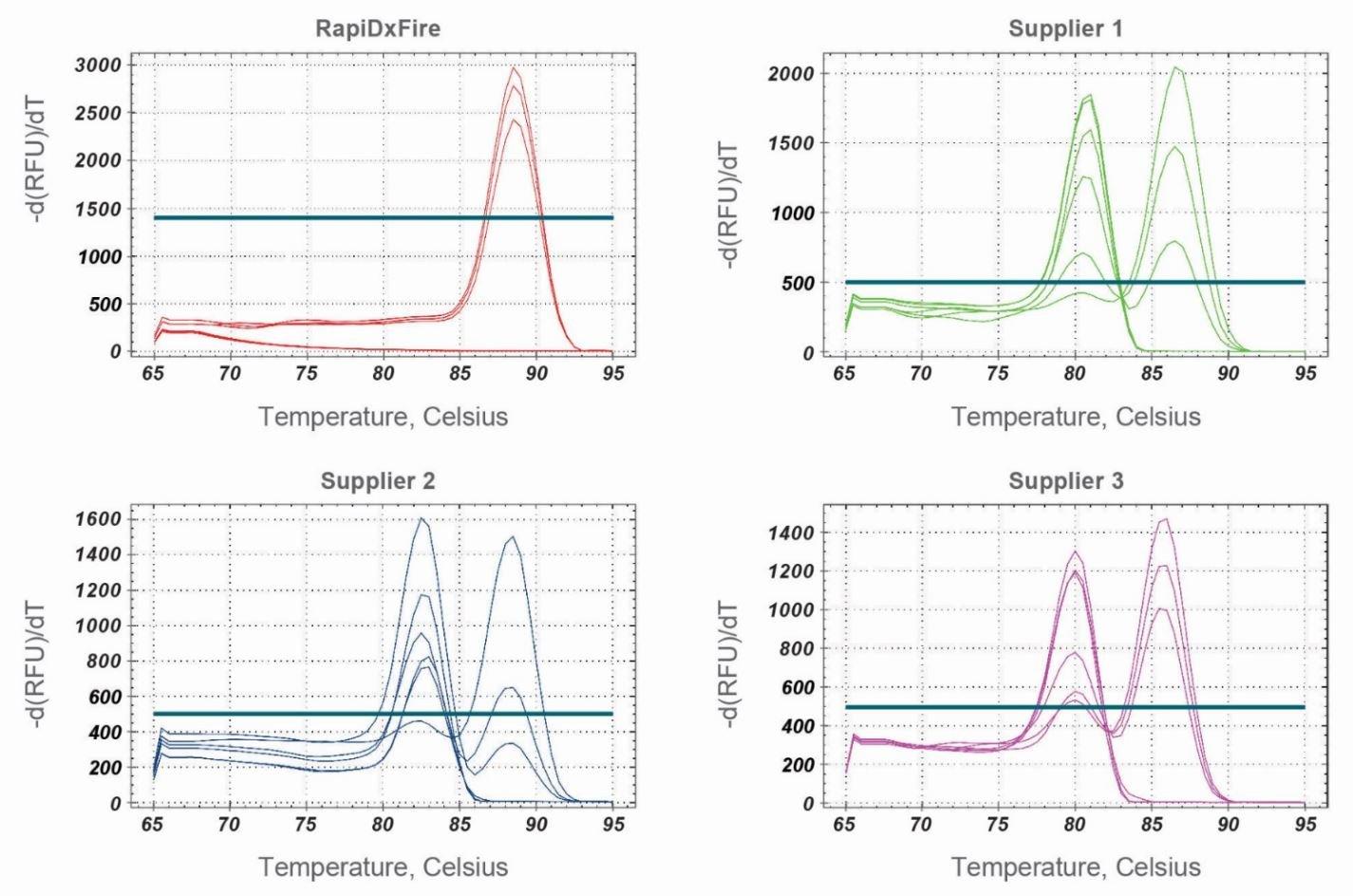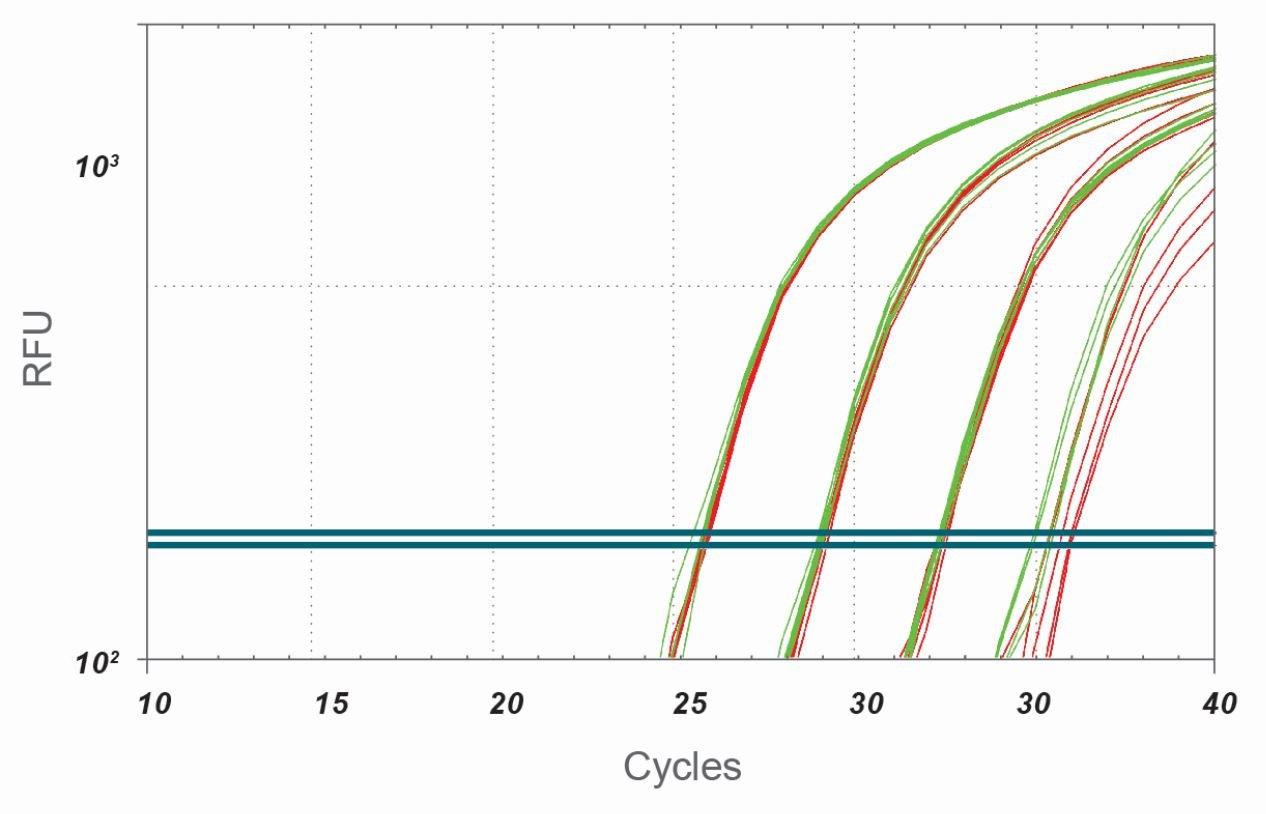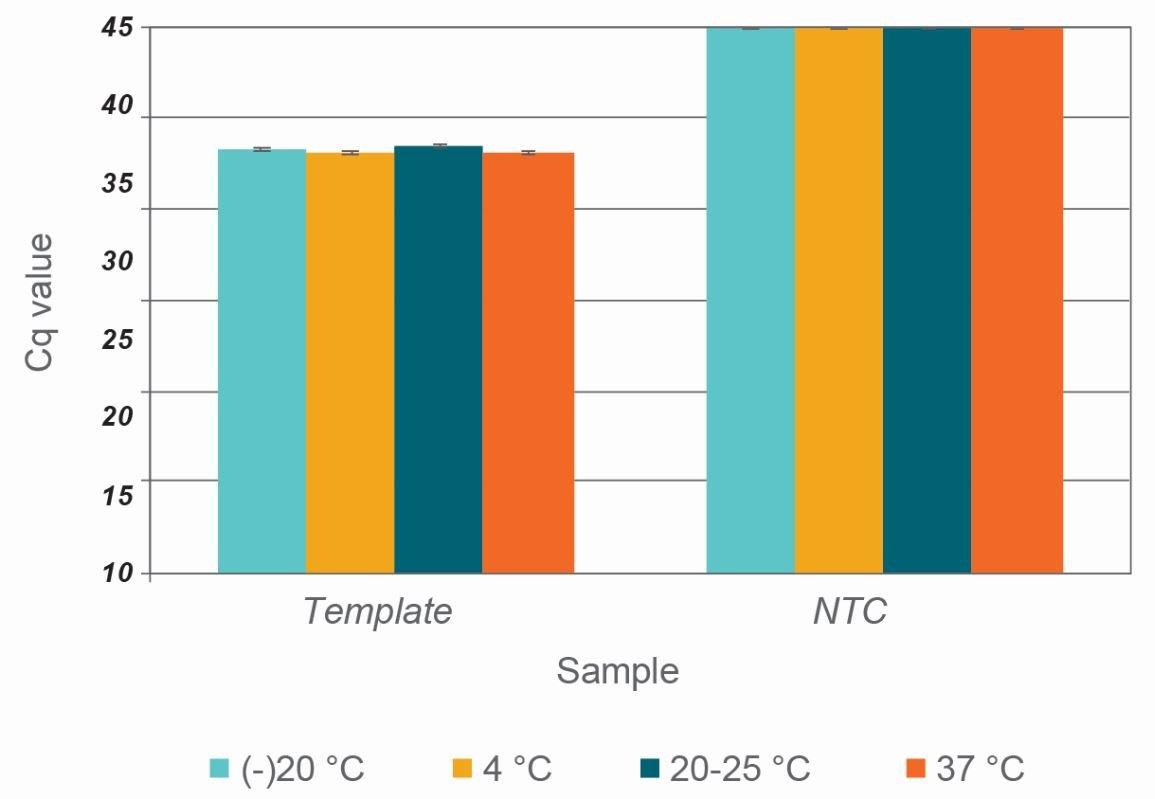Description
RapiDxFire Hot Start Taq DNA Polymerase
Product information
RapiDxFire Hot Start Taq DNA Polymerase is recombinant Taq DNA Polymerase from Thermus aquaticus bound to select blockers, which prevents unwanted, nonspecific amplification during reaction set up at temperatures less than 60 °C. Enzyme activity is restored after a short 15 second burst at 94 °C, enabling fast detection of low abundance target DNA. The Taq polymerase possesses 5′→3’ polymerase activity (amplicons up to 5 Kb) and dsDNA specific 5→3’ exonuclease activity, ideal for use with hydrolysis probes in qPCR reactions. The glycerol-free (GF), Triton®-free, and high- concentration formulation- is compatible with downstream lyophilisation methods and provides robust enzyme stability in liquid form (>28 days at 37 °C). These features provide flexible preparation and storage methods for qPCR master mixes (and detection assays) in addition to enabling benchtop reaction setups in warmer environments. Whether you are developing automated diagnostic tests or producing amplicons for downstream applications, RapiDxFire Hot Start Taq DNA Polymerase is your perfect choice for both demanding and routine PCR applications.
RapiDxFire Hot Start Taq is provided with 10x Reaction Buffer and a separate tube of 25 mM MgCl2.RapiDxFire Hot Start Taq GF enzyme storage buffer is free of glycerol (Item ID. 30043-1 and 30044-1). All reagents are free of Triton X-100.
Applications
- Food borne pathogen detection
- Diagnostic test development
- Biomarker discovery and monitoring
- Gene expression analysis
- SNP genotyping
- Copy number variation (CNV) analysis
- Cloning

Figure 1. RapiDxFire Hot Start Taq DNA Polymerase performs better than three market-leading hot start Taq polymerases. The comparison was conducted using a E. coli gene-specific assay that produces a melt peak at ~89°C. PCR cycling conditions included a 90 minute pre-incubation at 35°C to induce non-specific amplification. Each polymerase was tested using 1.25 Units of Taq and supplier-recommended buffer in a 25 µL reaction using SYBR green detection. All three competitors exhibit non-specific amplification as seen by the second melt peak.

Figure 2. Effect of RapiDxFire Hot Start Taq DNA Polymerase activation time on assay sensitivity. Target detection and PCR efficiency were compared when using a short 15-second hot start Taq activation time (green) versus a standard 2-minute activation time (red) at 94 °C prior to PCR cycling. RapiDxFire Hot Start Taq polymerase was tested using 0, 100, 1000, 10,000 copies of purified human DNA using a gene specific assay. Real-time detection of PCR products was performed using BHQplus™ probes and BioRad CFX C1000 Touch™ thermocycler.

Figure 3. Stability of RapiDxFire Hot Start Taq polymerase in glycerol-free enzyme storage buffer. Hot Start Taq enzyme was subjected to -20 °C, 4 °C, 20-25 °C, and 37 °C for 28 days prior to performing real time PCR using an E. coli gene specific assay against template DNA and No Template Control (NTC) in a glycerol-free reaction buffer. Detection of PCR products (2.4 kb) was performed in real time using an intercalating dye and BioRad CFX C1000 Touch™.
Product specifications and usage
Concentration: 5 U/µL (Cat No. 30042-1, 30043-1) or 50 U/µL (Cat. No. 30044-1).
Storage:Store at -20 °C.
If you cannot find the answer to your problem then please contact us or telephone +44 (0)1954 210 200



